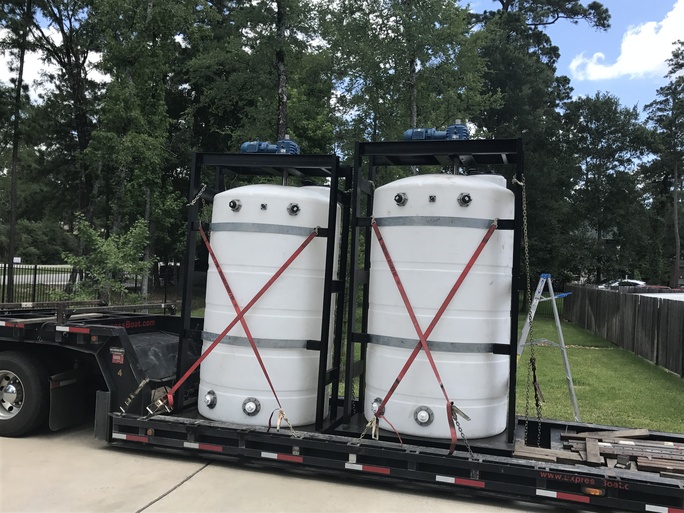A brief overview of the Manufacturing Process of how to build a rotational molded tank.

Polytanks and Rotational Molding traces its beginnings to the early 1930s, the process is now widely used to produce high quality industrial grade, seamless storage tanks for Chemicals and Water storage.
NSF compliant configurations, linear polyethylene food and water storage tanks.
Agricultural spray tanks, fertilizer storage tanks provide the farm and ranch with easy mobile liquid storage containers in polyethylene and fiberglass.
Horizontal tanks offer low center of gravity and mounting configurations to trucks and trailers for transporting and distributing water and chemicals. Drinking water, fertilizers, deicing liquids, dust controls to name a few applications.
Manufacturing Plastic Products by Rotational Molding.
The manufacturing process itself is relatively simple and features a few basic steps as is illustrated at right and on the following page.
The process of rotational molding includes four steps.
1…loading the resin in the mold
2…heating and fusing the resin
3…cooling the mold
4…unloading the mold
STEP 1: LOADING RESIN IN THE MOLD
A closeable mold corresponding to the products shape is charged with a plastic resin material in liquid or powder form. A variety of resin materials are available. The most widely used are polyethylene and plastisols. Other resin materials include nylon, fluoropolymers, polypropylene, polycarbonate, cellulose acetate butyrate, elastomers, monomer, polyurethane, EVA and specially formulated compounds.
A charged mold is moved into an oven.
STEP 2: HEATING AND FUSING THE RESIN
The mold is continuously rotated on two axes at low speed. As heat penetrates the rotating mold, the resin adheres to the mold�s inner surface until it is completely fused. The mold is rotated on two axis during the heating phase, thus giving the name to rotational molding and assuring that the plastic resin in moved to the required areas of the mold
STEP 3: COOLING THE MOLD
The mold is then moved to the cooling chamber and cooled by air or water spray or a combination of both while still rotating. The temperature is lowered in a gradual manner to allow the newly molded part to solidify, retaining the shape of the mold.
STEP 4: UNLOADING THE MOLD
The mold is opened, the finished part is removed, and the mold is charged for the next cycle.
ASTM 1998-97 Specifications for Rotationally Molded Polyethylene Tanks, governs the manufacture of our products. This specification (see Link below) will give you tremendous insight to the products and provide a knowledge base to access the quality of the products that you will procure for your company and inspect upon receipt. ASTM 1998-97 Specifications
We entered into the rotationally molded polyethylene products business in 1980, providing tanks for the drinking water, chemical, agricultural and the water treatment industries.
Since that time, We have undergone a continuous process of product development, improvement and the expansion of engineering, design, production and installation capabilities. TanksystemsCom has emerged as an industry leader in the markets we serve. Rotationally Molded Polyethylene Products are now available in volumetric cubic capacities to 16,500 gallons.
We are here to assist, give us a call. 281 825 4000

